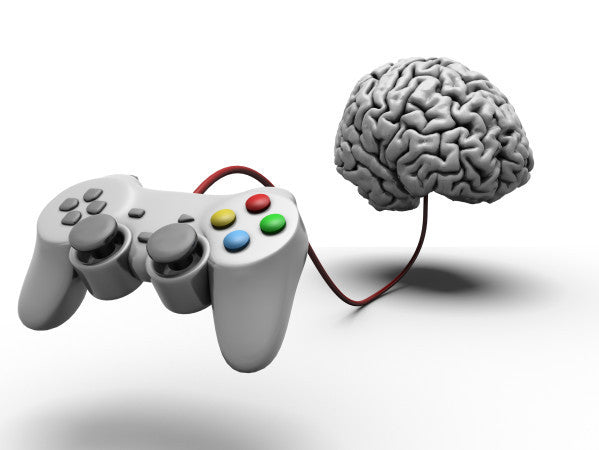What makes an addictive game?
The first game that ever got me well and truly hooked was Tetris. I got a Game Boy for my birthday. It was the clear one where you could see all of the innards of the handheld. We loved that clear hardware back in the ‘90s. It wasn’t my first games system, but it was the first that truly got its claws into me.
My first system was a Commodore 64 and while I had a lot of great games for it, few were what you could call addictive. Many of them were simple puzzle platformers like Treasure Island Dizzy, while a lot of the more traditional arcade shooters like Sly Spy Secret Agent needed to be reloaded every time you died which after a few deaths really got in the way. It wasn’t until I played Tetris on Game Boy that I fully appreciated just how addictive a game could be.
The beauty of Tetris and retro video games of the era was the games were fantastically simple to understand. All you had to do was fit blocks together. We did that as kids with block puzzles in nursery. It was one of the first mental challenges we ever went up against growing up. Tetris just took that to the next logical step and turned it into a game.
Every game of Tetris would be the same. It’d start very slowly. You’d start organising blocks together and then as time went by the blocks would start falling more quickly and you’d have less time to organise them. This would continue on and on until eventually the blocks fell too quickly for you to deal with, and the game beat you.
That was it. That was all there was to the game. And so the temptation to just have another go and see if you could do a little better the next time was always there. And then another. And another. Anyone has spent a significant amount of time playing Tetris can probably tell you, it’s so easy to start up another game after losing that often you’ll find your fingers doing it automatically without you even thinking about starting again. Before you know it, losing the game is a distant memory and you’re well on your way to another high score.
Fundamentally, it’s the simplicity of Tetris, the pick up and play nature of the game that makes it so addictive. And that’s the reason I used to spend the entire car journey to my Grandma’s every couple of months playing Tetris and driving my parents bonkers listening to the same background music for ninety minutes.
Few games are as addictive as Tetris is, but there’s still plenty that prove difficult to put down. Most Super Mario games, especially the 2D ones, will sink their teeth into you within just a couple of levels. Like Tetris, the beauty of Mario lies in the initial simplicity and increasing complexity of the game. All Mario games begin with very easy levels providing little in the way of challenge, but that are expertly designed to teach you all of the tools you’ll need to complete the later, much harder levels.
By the time jumping, dashing, and power-ups are second nature to you, the game ramps up in difficulty to provide you with a real challenge, and knowing that you can do it, but just need to be better, is all the inspiration you’ll likely need. Many an hour was spent replaying the same Mario level over and over again in my youth because I was this close to finishing it, but just needed to jump a little earlier, or keep that power-up a little longer.
Today, Mario platformers are as addictive as they were when I was a boy. Part of the reason for that is that the games are built on the same principles now as they always were. The level design starts simple but builds in difficulty, and the relatively short levels means just one more go is a tough one to say no to.
But another part of the reason that Mario games remain addictive is that they’ve never become much more complicated. Sure, they may have made the jump to 3D, but they’re basically the same games with a Z axis. Meanwhile, elsewhere in gaming, things have been getting a hell of a lot more complicated.
Playing a game like Metal Gear Solid or Kingdom Hearts will throw the player into a situation where they’ll spend minutes watching cut-scenes between each bit of gameplay, some of them fairly hefty in length, and many of them completely unskippable. Nothing kills the urge to have just one more go at beating a tough boss as knowing you’ll have to sit through a five minute cut-scene for the seventh time just to get to it.
As games have become bigger and more complicated like this, the ease of slipping into one more go has diminished. The Witcher III might be a great game, but it’s a slow burner. The same can be said of many popular game series’ today. The more complicated things have become, the less addictive they are.
That’s not to say that modern games aren't addictive. One of the most popular games of the current generation has been Bloodborne: a third person RPG from FromSoftware that is unashamed to be old school. Bloodborne doesn’t have a tutorial or much in the way of a story. It just throws you into a world full of monsters that are tough as nails to fight and tells you you’ll have to get better or you’ll never make it out of the game alive.
Where Bloodborne becomes truly addictive is in the boss fights, which are usually difficult but fair, and you can always see where you’re going wrong when you die. Knowing that you’re nearly there is one of the best ways to justify having just another go to yourself, and I wouldn’t even like to guess at the number of hours I spent trying to defeat some of the tougher bosses in the game.
Elsewhere, modern gaming has other retro-inspired games that can be phenomenally addictive too. Twin stick shooters like Resogun or Stardust are built on the same ideas of simplicity and escalating difficulty as the most addictive games of yesteryear, and games like Trials urge the player to be better by having just one more go. Playing these games reminds me of playing games from long ago, and just how addictive some of them were.
Multiplayer games were perfect for sucking you in because they gave you competition with a friend, and then made it easy to get back into the game. Street Fighter II is a great example of this. There you’d be, fighting your best mate in a close match-up. You’d nearly have him beaten but then out of nowhere he’d hit you with the hundred hand slap and it would be game over. Walking away on a loss like that is next to impossible and so with a couple of button presses, you’d be right back into the heat of battle.
Toejam & Earl was another multiplayer game that was difficult to put down for me. We’d work our way through the game looking for ship parts, and even if we’d been on playing for a couple of hours, we’d start it right back up from the beginning again if one of us was tragically killed by a woman pushing her kid in a shopping basket out of the blue.
Simplicity and the ease of beginning again makes games addictive. And with more limited hardware and technology, early games had to rely on that more than story-telling or other means to keep people playing. Toejam & Earl had a story but it was nothing to write home about. All that mattered was getting to the ship parts, and having fun doing it with your friends. With games becoming more complicated in time, it seems like the industry has lost a little of the pure gameplay that made the games of my youth so addictive. And that’s a shame.
I distinctly remember one afternoon at a friend’s house playing Marble Madness for what must have been six hours straight. We never actually finished it. But we got close so many times that we just kept trying it. We’d got it to the point where even the upside down world, where gravity meant that your marble rolled uphill quicker than it did downhill, couldn’t phase us. But then at some point, whether it was inches from victory or on the first corner, one of us would do something silly and our marbles would end up careening off a cliff edge. “Okay, that one didn’t count,” we’d say. “Just one more go.”



